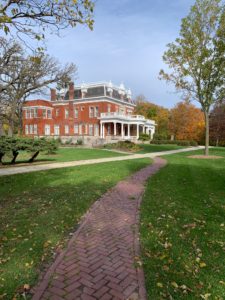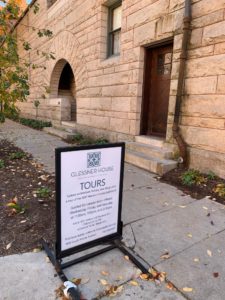Almost every city and town in the world has at least one house museum.
They come in all shapes and sizes, from palatial mansion to the most humble cabin. It might be a property of the park district, the local historical society, or even the National Park Service. It could be the civic enterprise of a noteworthy family or the quirky legacy of a local eccentric. The house museum is indeed a mixed bag, but that’s its charm and ultimately its importance.
In the most general sense, a museum is defined by the the International Council of Museums as “a non-profit, permanent institution in the service of society and its development, open to the public, which acquires, conserves, researches, communicates and exhibits the tangible and intangible heritage of humanity and its environment for the purposes of education, study and enjoyment.” That’s quite a broad definition, but when most people hear the word “museum,” they picture something very specific: The Metropolitan Museum of Art, the Smithsonian.
We all have memories of being bundled onto buses (signed permission slips in hand) for a field trip to ______________ (fill in the name your hometown’s monumental museum). In my case, it was the awe-inspiring Nelson-Atkins Museum of Art in Kansas City. For us kids, those field trips were very exciting in theory but pretty boring in actual fact. I think that’s largely because of two things: the hushed formality of these places is intimidating and the disembodied “otherness” of their collections is unrelatable.
Institutional museums traditionally collect the best, the most precious, the irreplaceable, so these things must be exhibited behind glass or in sealed, climate-controlled cases, keeping the public at arm’s length. This kind of treatment is necessary for the conservation of artifacts that would otherwise be totally inaccessible or even lost entirely. Yes, institutional museums play a hugely important role in our preservation and understanding of human culture and, to be fair, many museums today are changing their practices to be less otherwordly.
Still, conventional museum treatment inevitably puts objects in a weird landscape most people don’t recognize, a contrived place far removed from the objects’ original purpose, use, or life. Once a thing is pulled out of the stream of human enterprise, it stops, it kind of dies. A thing in such surroundings is fundamentally changed from whatever it once was to a new thing altogether: a museum piece.
The house museum scales back material culture to human size and displays objects in a recognizable context.
The defining characteristic of the house museum is its display of objects in their “natural” habitat. Even when the furnishings and decorative arts are not original to that specific house, they are usually displayed as they would have been used or enjoyed in such a space and time, whether it’s a painting in the library, a gilded console table in the foyer, or a new-fangled mangle in the basement laundry. Each object is chosen and displayed not for its importance in the world but for its importance in a specific place. House museum collections thus reflect a range of quality, personal taste, wear and tear and damage, and social class. In that way, things there are very human, which brings me to the characteristic of house museums I value most: engagement.
Visitors to house museums enjoy an intimacy and interaction with the place, its history, its occupants and their possessions, that are difficult for an institution to equal. In large traditional museums, “guided” tours are usually recorded mini-lectures delivered via technology and “engagement” depends heavily on sophisticated reading skills. House museum tours, on the other hand, are usually conducted in small groups led by knowledgeable volunteer docents, real people who are highly motivated and eager to share “their” house with you. Mary, a docent at the Ellwood House in DeKalb, Illinois, explains why she volunteers:
I enjoy regular interactions with visitors and the staff. People do not visit the property unless they are genuinely interested in some aspect of the house, family, or town history. I tend to learn something of interest from guests with each tour, or a question that I cannot answer leads to further insights from staff to share in the future.
She’s also very conscious of the importance of the house in her community and the unique value of house museums in general:
So many grand homes have been torn down in the name of “progress.” Houses that do survive speak to a strength of a community. … [T]he folks who formed and perpetuated the House Association have worked tirelessly to … preserve and restore [the Ellwood House]. Because the grounds are also a city park, they are used daily, year around …. In so many ways, the house stays current and is a focal point for community pride.
House museums are truly treasures nearby. They make for stimulating and affordable day trips for all ages. To find a house museum in your area, start with the list at Old Houses.com.
The servants’ entrance of the Glessner House, Chicago, IL
The Glessner House (1887), 1800 S Prairie Avenue, Chicago IL
The Ellwood House (1879), 420 Linden Place, DeKalb IL
 Lawn of the Ellwood House, DeKalb, IL
Lawn of the Ellwood House, DeKalb, IL


